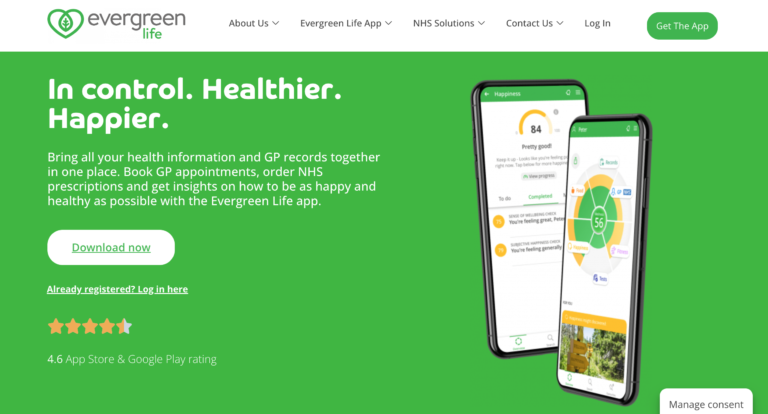Living in an environmentally friendly, sustainable home is a great way to reduce your carbon footprint and live a healthier lifestyle. Sustainable homes are designed with the environment in mind, using renewable and efficient materials and technologies. The benefits of eco-friendly, sustainable living extend far beyond protecting the planet; there are also numerous financial, health and social benefits to consider. This article will explore how sustainable homes can help you save money while improving your overall quality of life.
Sustainable Home
Earth-friendly living is becoming increasingly popular in households around the world. Sustainable homes are designed to reduce their negative impact on the environment with various low-carbon activities and eco-friendly products. Via a combination of techniques, sustainable homes can make a positive contribution to the environment by reducing their energy and water consumption, as well as their waste output. This type of green living can have long-term benefits for homeowners who are looking for cost savings and energy efficiency in their residence.
Sustainable homes have multiple components that work together to minimize their environmental footprint, from green building materials, solar panels for energy production, and efficient insulation for heat retention. Additionally, sustainable homes may opt for renewable heating sources such as biofuels or heat pumps instead of conventional electric or gas heating systems. Furthermore, sustainable homeowners also choose eco-friendly cleaning products and appliances to reduce electricity usage.
Low Energy Consumption
Living in a sustainable house is possible by utilizing low energy consumption. Low energy consumption will not only reduce environmental emissions, but also save homeowners money on their utility bills. Homeowners can begin to lower their energy usage by making simple changes such as installing LED lighting, using efficient water systems, and updating appliances with more energy-efficient models.
Installing LED lighting is one of the easiest ways to reduce energy consumption in a home. Not only do LED bulbs last longer than traditional incandescent bulbs, they also use significantly less electricity and generate less heat. Additionally, efficient water systems can help reduce the amount of hot water used while taking showers or washing dishes. Installing low-flow shower heads and faucets reduces wasted water without sacrificing performance or comfort. Updating appliances is another way to reduce energy consumption. Upgrading to an Energy Star refrigerator or dishwasher can save hundreds of dollars in electricity costs over the lifetime of the appliance.
Low Carbon Footprint
Imagine living in a house that is environmentally-friendly and sustainable. With a low carbon footprint, you can reduce your environmental impact while still having a comfortable home.
A low carbon footprint means reducing energy use and waste by relying on renewable resources for electricity and water, and choosing green building materials. It also involves making smart decisions about how we use resources like heating, cooling, transportation, food production or technology.
Living in a sustainable house is an excellent way to lessen your contribution to climate change and support the environment. Not only will you be able to save money on your energy bills but you’ll also be doing your part to help protect the planet. Sustainable homes come with numerous benefits such as improved air quality, reduced water consumption, increased energy efficiency, lower maintenance costs and much more.
Increased Efficiency and Comfort
Living in a sustainable house is a great way to reduce your environmental impact and lower your energy bills. With increased advances in green technologies, you can now experience increased efficiency and comfort–all while enjoying the benefits of living sustainably.
Sustainable homes are designed to use natural resources such as sunlight and wind more efficiently, resulting in reduced energy costs. Many also incorporate features such as low-flow fixtures and insulation to further improve efficiency. Additionally, sustainable materials are often used in construction, which helps reduce the home’s overall carbon footprint. These methods can result in comfortable temperatures year-round while reducing dependence on air conditioning systems that consume large amounts of energy.
The latest advancements in green technology allow homeowners to enjoy the convenience of modern comforts without sacrificing their commitment to sustainability.
Health Benefits of Eco-friendly Materials
Living in a sustainable house offers a variety of health benefits that go beyond the environmental advantages. Eco-friendly materials are becoming increasingly popular for construction and renovation projects, as they offer improved air quality, reduced exposure to toxins, and better sound insulation.
One of the main components of eco-friendly materials is their lack of VOCs (volatile organic compounds). These compounds can be released from many traditional building products and can cause respiratory irritation or other health problems. By avoiding them and opting for materials with low VOC emissions, you can reduce your family’s exposure to these toxins.
Additionally, eco-friendly materials also provide superior soundproofing compared to conventional construction methods. This reduces noise pollution from outside sources such as traffic or nearby businesses which can lead to increased stress levels if left unchecked.
Choosing low-VOC materials is not as easy as it sounds. As of now, there are no concrete regulations in place to determine what makes a material environmentally friendly.
Financial Benefits of Sustainable Living
One of the key benefits of living in a sustainable home is the financial savings it can bring. By using energy efficient appliances, materials and techniques, homeowners can reduce their energy bills significantly over time. Additionally, many local governments and utilities provide rebates or other incentives to those who make their homes more sustainable.
Beyond savings on energy bills, sustainable living can also bring financial benefits through increased home value or resale value. Homes that boast sustainable features like solar panels or green roofs tend to be more desirable for potential buyers and typically have higher resale values than traditional homes. Many areas also offer tax credits for homeowners who invest in green building projects such as installing insulation or water-saving fixtures, making sustainability even more financially attractive to prospective homeowners.
Challenges of Sustainable Building
Sustainable buildings are becoming increasingly popular as climate change continues to have a devastating effect on the environment. In order to make buildings more sustainable, homeowners must be willing to face a variety of challenges. From dealing with costly materials and labor, to finding ways to reduce their environmental impact, living in a sustainable home can be both difficult and rewarding.
From an economic standpoint, building or remodeling with sustainability in mind can be expensive. Sustainable materials such as bamboo flooring or low-VOC paint may cost more than traditional products. Additionally, labor costs associated with installing solar panels or other green technologies will also likely add up quickly. Homeowners should carefully consider the upfront costs versus long-term benefits of building sustainably before making any major investments in their home.
It is also important for homeowners to take into account the energy efficiency of their home when living sustainably.
Conclusion: Eco-Friendly Future
In conclusion, making the switch to an eco-friendly and sustainable home is a great way to reduce your environmental impact while saving money in the long run. Not only will you be helping to protect our planet and its resources, but you can also experience the added benefits of living a greener lifestyle. From improved air quality and lower energy bills, to reduced waste and water usage, making the transition is a win-win for everyone.




